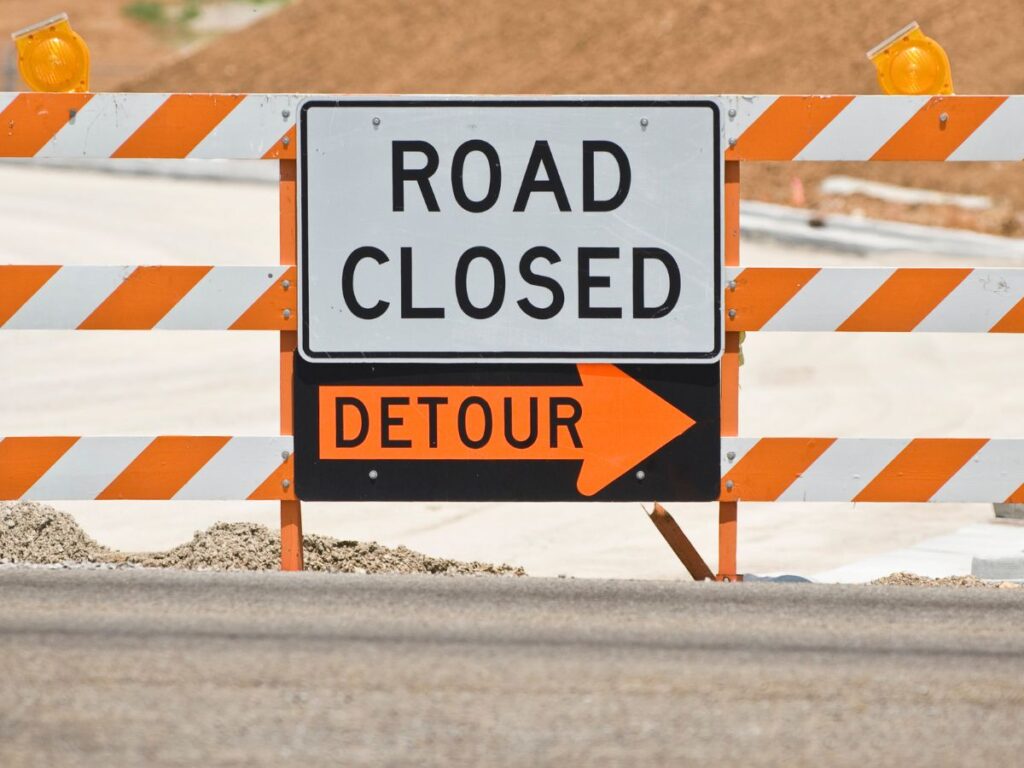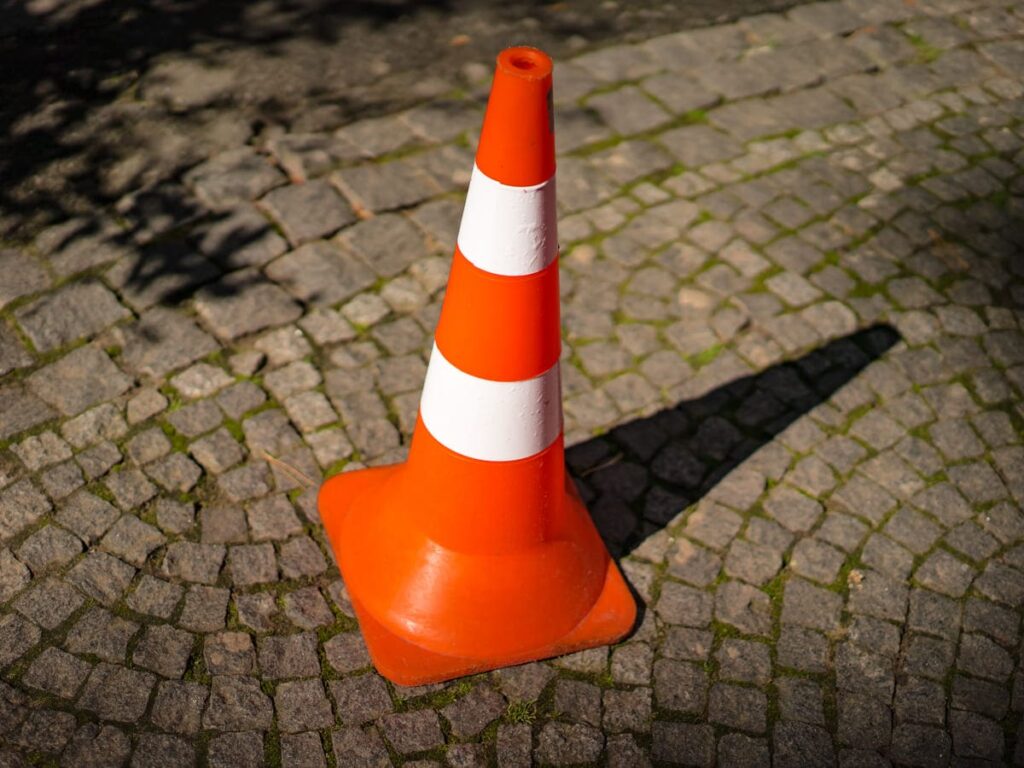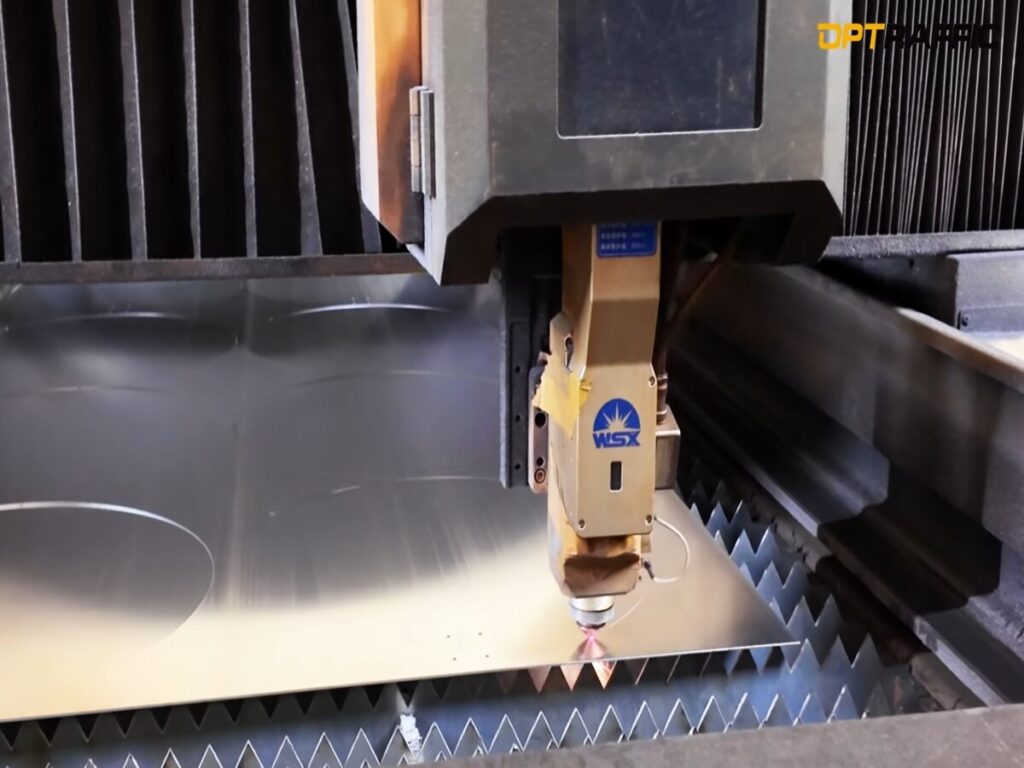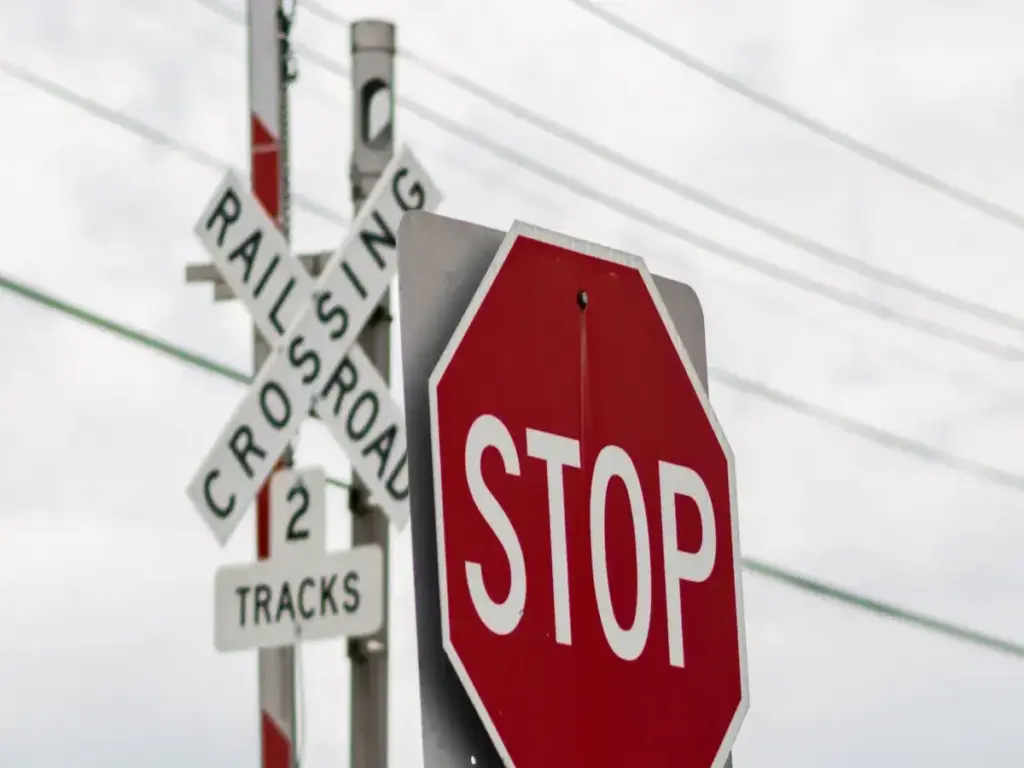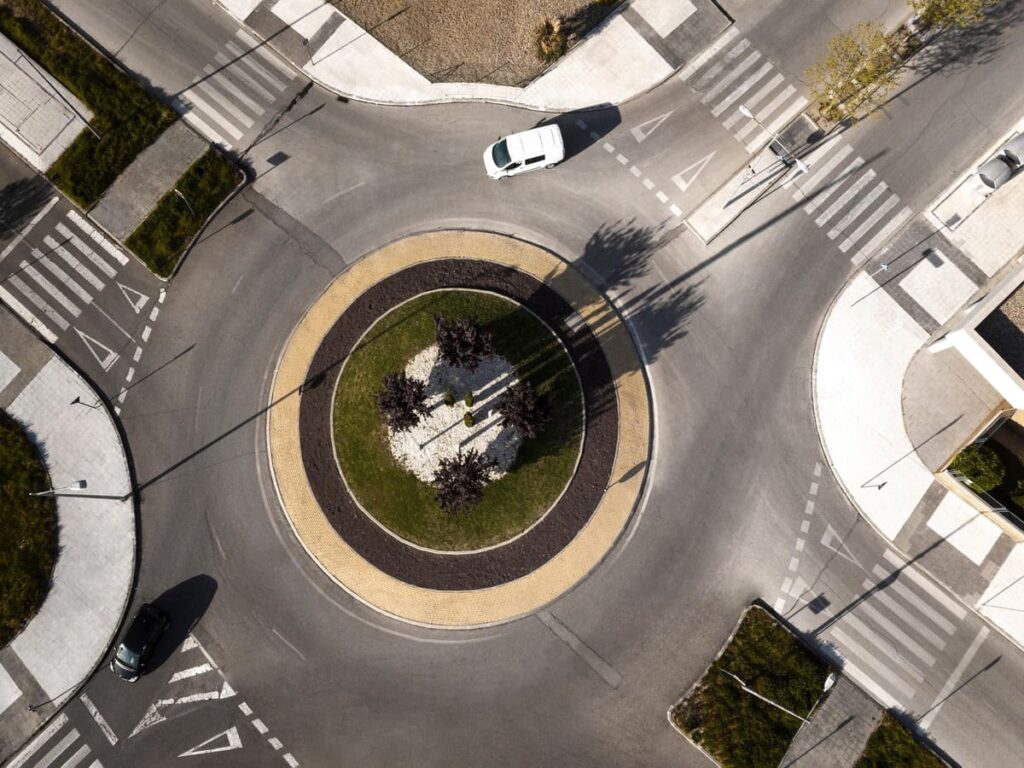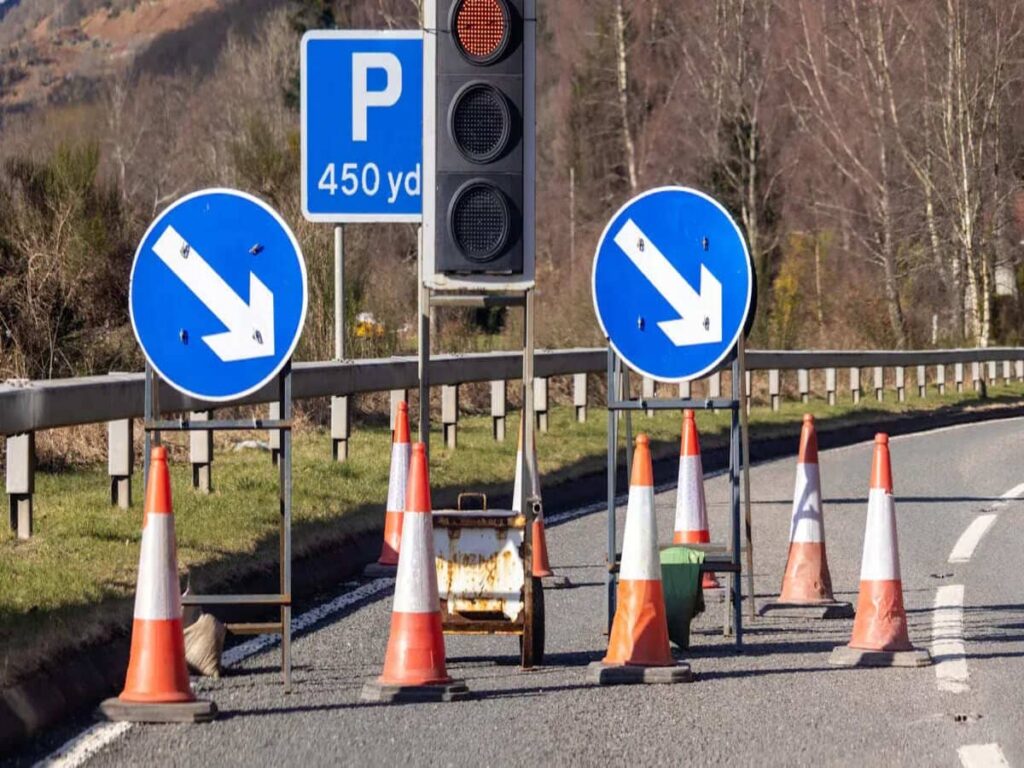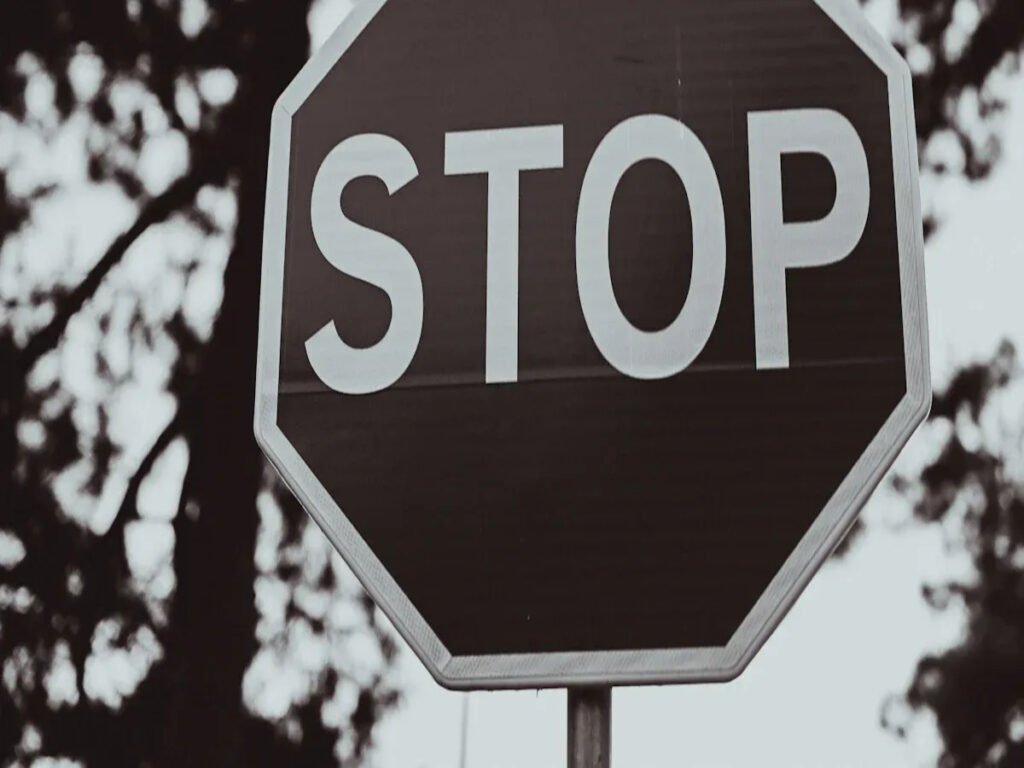
매일, 색맹이있는 운전자는 도로에서 도전에 도전을 증가시킵니다.. 사우디 아라비아의 연구에 따르면이 연구에 따르면 4.7% 트럭 운전자의 색정 부족이있었습니다. 시력 문제가있는 운전자는 사고의 위험이 더 컸습니다.. 간단한 수정, 3 개의 검은 점이있는 정지 부호와 같은, 모든 운전자를 지원하십시오. 이러한 변경 사항은 신호등이 작동하지 않을 때 특히 유용합니다.. 연구에 따르면 모양과 패턴이 운전자가 위험에 더 빨리 응답 할 수 있습니다.. 이 시각적 신호는 모든 사람에게 도로를 더 안전하게 만드는 데 기여합니다..
Optraffic에서, 우리는 포괄적이고 접근 가능한 교통 솔루션의 중요성을 인식하고 있습니다.. a 교통안전표지판 제조사, 우리는 가시성이 높은 간판 옵션을 제공합니다, 세 개의 검은 점으로 된 정지 신호처럼, 모든 도로 사용자의 안전을 강화하도록 설계되었습니다., 시각 장애가 있는 사람을 포함하여.
색맹 문제
색맹의 유형
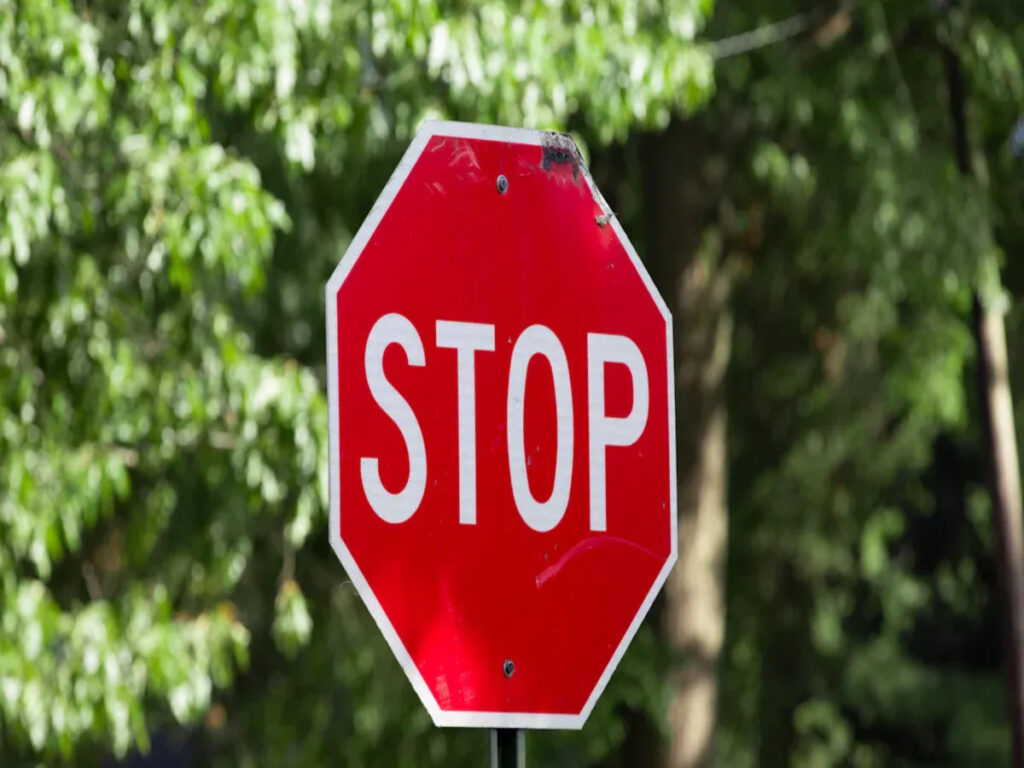
색맹은 전 세계 많은 사람들에게 영향을 미칩니다.. 이 질환이 있는 대부분의 사람들은 빨간색과 녹색 음영을 잘 볼 수 없습니다.. 과학자들은 색맹을 여러 그룹으로 분류했습니다.. 아래 표에는 주요 유형이 나열되어 있습니다., 얼마나 흔한지, 그리고 누가 그것을 가장 많이 얻는가?:
| 색맹 유형 | 널리 퍼짐 (%) 전반적인 | 남성 유병률 (%) | 여성 보급률 (%) | 참고/추가 정보 |
|---|---|---|---|---|
| 빨강-녹색 (모든 유형) | 98% 경우의 | ~8% | ~0.5% | 가장 일반적인 유형 |
| 데네온리 (녹색 원뿔) | 2.32% | ~6% | 매우 낮음 | 가장 자주 발생하는 특정 유형 |
| 원형종 (빨간 원뿔) | 0.54% | 듀터라노말리보다 낮음 | 매우 낮음 | |
| 삼중종 (블루 콘) | 0.02% | 매우 드물다 | 성별 차이 없음 | |
| 중수소맹 (녹색 누락) | 0.64% | N/A | N/A | 녹색 원뿔이 전혀 없음 |
| 백색맹 (빨간색 누락) | 0.51% | N/A | N/A | 레드 콘이 전혀 없음 |
| 삼변맹 (파란색이 없어) | 0.01% | N/A | N/A | 최소 빈도 완전 결석 |
| 청황색 결핍 | ~0.01% (1 ~에 10,000) | 남성/여성 동일 | 동일한 | 희귀한, 상염색체 유전 |
| 색맹 | ~0.003% (1 ~에 30,000) | N/A | N/A | 극심한, 희귀한 형태 |
적록 색맹은 가장 흔한 유형입니다.. 남아는 여아보다 색맹이 될 가능성이 더 높습니다.. 아래 차트는 다양한 인종 그룹에서 색맹이 얼마나 자주 발생하는지 보여줍니다.:
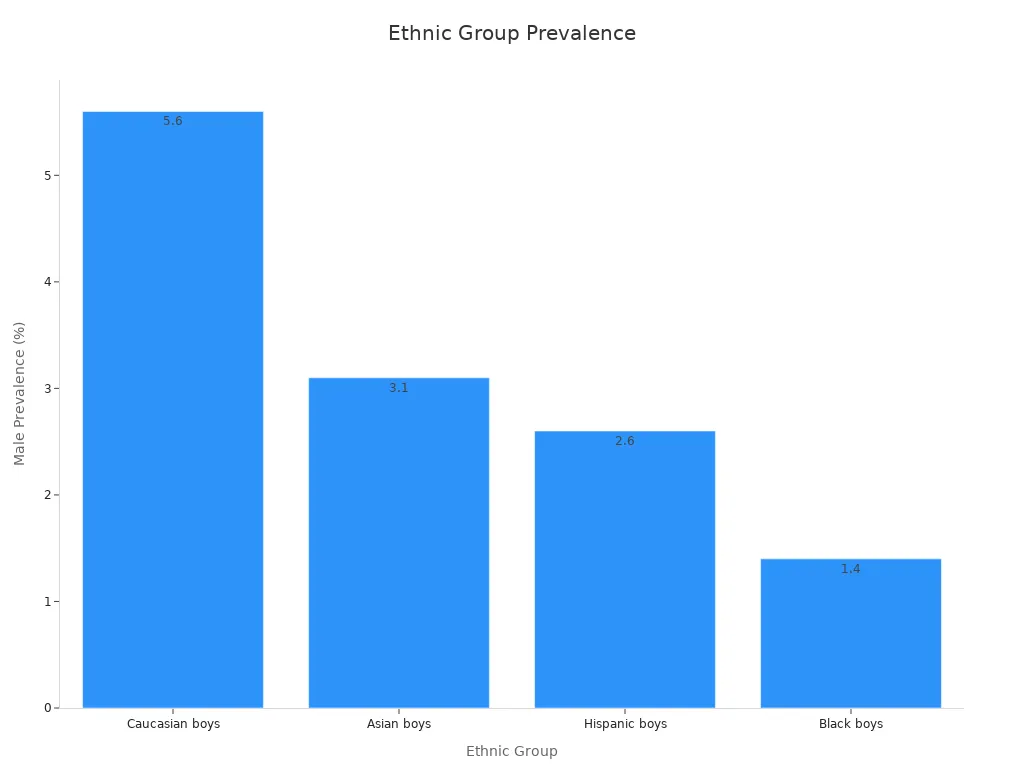
빨간색 정지 신호 관련 문제
색맹 운전자는 도로에서 특별한 문제를 겪습니다.. 많은 사람들이 빨간색 신호등과 녹색 신호등을 구분하지 못합니다.. 몇 가지 일반적인 문제가 있습니다:
- 빨간색과 녹색을 구별하기가 어렵습니다., 특히 신호등에서.
- 노란색과 녹색 조명을 혼합하여.
- 브레이크등이나 방향지시등이 쉽게 보이지 않음.
- 야간 운전은 색상이 칙칙해 보이기 때문에 더 힘듭니다.
- 일부 운전자는 신호등과 가로등을 혼동합니다..
메모: 많은 색맹 운전자는 안전 운전을 돕기 위해 조명의 모양이나 위치와 같은 단서를 사용합니다..
적색맹이나 중수소맹이 있는 사람은 정상적인 빨간색 정지 신호를 보기 어려울 수 있습니다.. 이러한 운전자는 나무나 벽돌담 근처에 있으면 빨간색 표지판을 발견하지 못할 수 있습니다.. 연구에 따르면 색각 이상이 있는 사람들은 빨간색 신호에 더 느리게 반응합니다.. 어떤 사람들은 정지 신호나 경고등을 놓쳤다고 말합니다., 특히 어두울 때. 이러한 문제에도 불구하고, 색맹 운전자의 사고율은 다른 운전자에 비해 그리 높지 않습니다.. 많은 사람들이 신호가 어디에 있는지 기억하고 더 조심스럽게 운전하는 법을 배웁니다..
세 개의 검은 점이 있는 정지 신호
디자인 및 기능
세 개의 검은색 점이 있는 정지 신호는 전통적인 빨간색 정지 신호보다 돋보입니다.. 이 디자인은 단어 아래에 삼각형으로 배열된 세 개의 굵은 검정색 점을 사용합니다. “멈추다”. 점은 운전자가 빠르게 인식할 수 있는 강력한 시각적 패턴을 만듭니다.. 팔각형 모양의 간판은 그대로 유지됩니다., 하지만 검은 점은 대비를 더해줍니다. 이는 빨간색을 잘 볼 수 없는 운전자에게 도움이 됩니다.. 검은 점은 색상에 의존하지 않습니다.. 명확한 메시지를 전달하기 위해 모양과 패턴을 사용합니다..
색맹이 있는 많은 운전자는 세 개의 검은색 점이 있는 정지 신호를 더 쉽게 찾을 수 있습니다.. 검은 점이 눈길을 사로잡는다, 배경이 복잡하거나 조명이 어두울 때에도. 이 패턴은 빨간색을 보는 데 어려움을 겪는 사람들에게 적합합니다.. 또한 대비 감도를 일부 상실한 노년층 운전자에게도 도움이 됩니다.. 표지판은 모양과 패턴을 모두 사용합니다., 그래서 운전자에게 하나 이상의 단서를 제공합니다.. 이를 통해 모든 사람의 도로가 더 안전해집니다..
신호등에서의 기능
검은 점 세 개가 있는 정지 신호는 신호등이 있는 교차로에 자주 나타납니다.. 조명이 작동을 멈추거나 노란색으로 깜박일 때 중요한 역할을 합니다.. 이 경우, 운전자는 일반적인 색상 신호 없이 무엇을 할지 결정해야 합니다.. 세 개의 검은 점은 명확하게 나타납니다., 색상 기반이 아닌 중지 신호. 운전자는 표지판이나 조명의 색상에 의존할 필요가 없습니다.. 그들은 패턴을 보고 멈추는 법을 알 수 있습니다.
뉴 사우스 웨일즈에서, 호주, 지방의회는 많은 교차로에서 세 개의 검은 점이 있는 정지 신호를 사용했습니다.. 이 관행은 운전자에게 도움이 됩니다., 특히 색맹이 있는 사람들, 더 빠르고 안전하게 대응하세요. 호주의 연구에 따르면 흑점 치료는, 위험한 장소를 표시하기 위해 세 개의 검은 점을 사용하는 것을 포함합니다., 부상 충돌을 최대로 줄일 수 있습니다. 27%. 아래 표는 이러한 조치가 교차로의 안전을 어떻게 개선하는지 보여줍니다.:
| 안전 조치 / 위치 유형 | 부상 충돌 감소 | 치명적/심각한 부상 충돌 감소 |
|---|---|---|
| 전반적인 흑점 처리 (통제 그룹 포함) | 24-27% | 46-57% |
| 레이아웃 변경으로 우선적으로 통제되는 교차로 | 42% | N/A |
| 새로운 신호등이 설치된 교차로 | 35% | N/A |
| 좌회전 신호가 있는 교차로 | 22% | N/A |
| 신호 교차로의 레이아웃 변경 | 11% | N/A |
| 로터리로의 전환 (신호 및 우선순위) | 21% | N/A |
이 결과는 세 개의 검은 점으로 구성된 정지 신호를 보여줍니다., 블랙스팟 치료의 일환으로, 충돌률을 낮추는 데 도움이 됩니다.. 표지판은 모든 운전자에게, 색맹이 있는 사람을 포함해, 멈춰야 할 때를 아는 명확하고 빠른 방법. 이러한 간단한 디자인 변경으로 교차로가 더욱 안전해지고 포괄적인 도로 안전이 지원됩니다..
모양과 대비
팔각형 인식
정지 신호는 팔각형 모양입니다.. 이 모양은 길에서 쉽게 눈에 띕니다. 운전자는 색상을 보기 어려운 경우에도 이를 볼 수 있습니다.. 팔각형은 다른 도로 표지판처럼 보이지 않습니다.. 이를 통해 운전자는 이를 빠르게 알아차릴 수 있습니다.. 혼잡하거나 혼란스러운 장소에서 도움이 됩니다..
연구자들은 사람들이 다양한 표지판 모양을 어떻게 보는지 조사했습니다.. 아래 표는 그들이 발견한 내용을 보여줍니다.. 팔각형 표지판, 정지 신호처럼, 가장 알아보기 쉬운. 운전자는 원형이나 직사각형 표지판보다 더 빨리 볼 수 있습니다..
팔각형 정지 신호가 거의 인식됩니다. 95% 시간의. 동그란 간판보다 이게 낫네요, '주차금지' 같은, 에 대해 본 84% 시간의. 특별한 모양은 모든 운전자에게 도움이 됩니다., 색맹이신 분들도, 빨리 표지판을 찾아라.
가시성을 위한 검은 점
검은색 점이 정지신호를 더욱 돋보이게 합니다.. 점들은 표지판에 강한 패턴을 형성합니다.. 빨간색을 잘 볼 수 없는 운전자도 검은색 점을 볼 수 있습니다.. 나무나 벽돌벽 근처에서 유용합니다.. 검은 점은 색상을 사용하지 않은 명확한 단서를 제공합니다..
- 검은색 점은 표지판의 가장자리를 더욱 선명하게 만듭니다..
- 패턴이 보기 쉬워요, 희미한 빛에서도.
- 나이가 많은 운전자와 대비가 덜 보이는 운전자는 표지판을 더 잘 찾을 수 있습니다..
연구에 따르면 검은 점과 같은 모양을 사용하면 운전자가 다음 사항에 대응하는 데 도움이 됩니다. 30% 더 빠르게. 색각이상이 있는 운전자의 경우에도 마찬가지입니다.. 모양과 대비가 혼합되어 정지 신호를 더 쉽게 알아보고 이해할 수 있습니다.. 이 디자인은 모든 사람의 도로를 더욱 안전하게 유지하는 데 도움이 됩니다..
포괄적인 도로 안전 설계
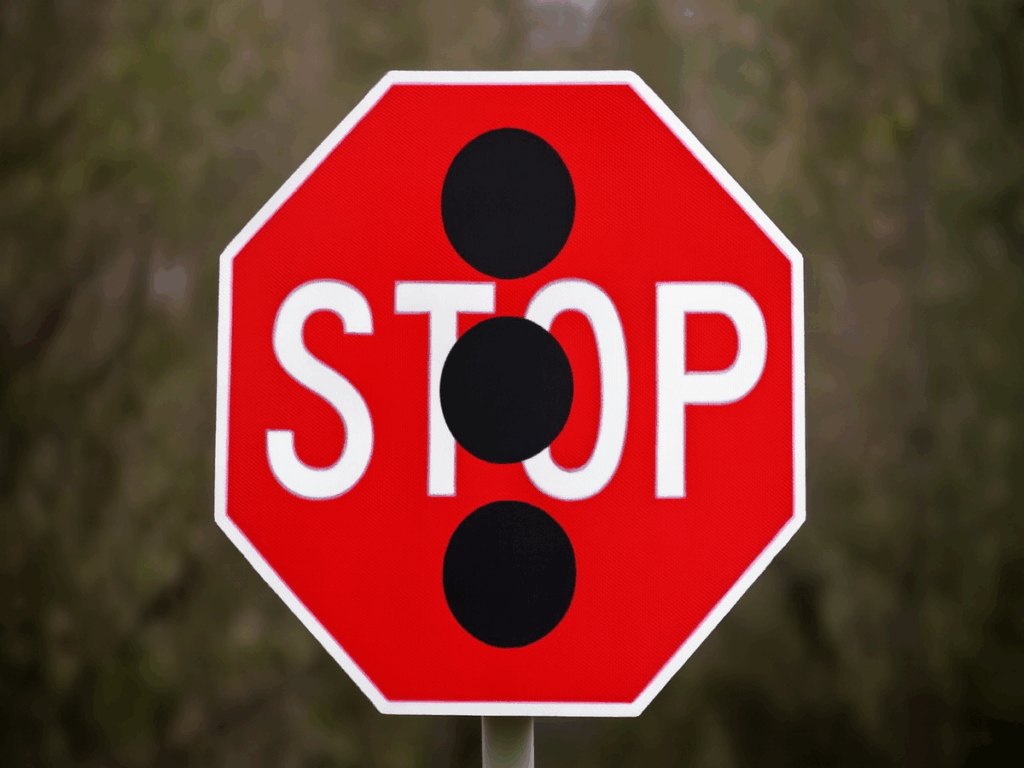
간판의 중복성
도로 표지판의 중복은 하나 이상의 단서를 제공하는 것을 의미합니다.. 이것은 모든 운전자를 돕습니다, 색맹이거나 시력이 좋지 않은 사람이라도. 표지판은 모양을 사용합니다., 색상, 차이, 모두가 이해할 수 있도록 빛나세요. 인간 정보 처리 모델에 따르면 운전자는 더 많은 단서를 통해 더 빠르게 반응합니다.. 예를 들어, 세 개의 검은색 점이 있는 정지 신호는 모양과 패턴을 모두 사용합니다.. 이는 빨간색을 잘 볼 수 없는 운전자에게 도움이 됩니다..
| 원칙 | 설명 |
|---|---|
| 사인 크기 | 더 큰 글자는 사람들이 표지판을 읽는 데 도움이 됩니다., 특히 밤에. |
| 획 폭 | 굵은 선으로 인해 노년층 운전자가 표지판을 더 쉽게 볼 수 있습니다.. |
| 차이 | 강한 대비, 주황색 바탕에 검정색처럼, 표지판을 쉽게 알아볼 수 있게 해줍니다. |
| 형광물질 | 어떤 날씨에도 간판이 눈에 띄는 밝은 소재. |
| 기호 사용 | 사진은 운전자가 표지판의 의미를 빠르게 알 수 있도록 도와줍니다.. |
| 중복 서명 | 주요 장소에 있는 추가 표지판을 통해 운전자가 메시지를 확실히 이해할 수 있습니다.. |
- 형광등은 운전자가 멀리서도 표지판을 볼 수 있도록 도와줍니다..
- 표지판이 밝고 깨끗할 때 운전자는 속도를 더 늦춥니다..
- 좋은 표지판 지점과 반짝이는 재질로 인해 악천후에서도 표지판을 쉽게 볼 수 있습니다..
세 개의 검은색 점이 있는 정지 신호는 또 다른 시각적 단서를 제공합니다.. 이를 통해 다양한 요구 사항을 가진 운전자가 표지판을 더 쉽게 보고 이해할 수 있습니다.. 일반 정지 신호는 대부분 색상과 모양을 사용합니다.. 검은색 점이 안전성을 더해줍니다..
글로벌 트렌드
모든 국가는 모든 사람을 위해 도로를 더욱 안전하게 만들기 위해 노력하고 있습니다.. 부유한 국가에서는 더 나은 표지판과 규칙을 사용하기 때문에 교통사고 사망자가 더 적습니다.. 일부 가난한 나라, 부룬디처럼, 새로운 안전 아이디어를 시도하여 큰 변화를 이루었습니다.. UN과 유럽연합은 안전 시스템 계획을 지지합니다.. 도로를 만든다는 뜻이다., 손짓, 모두를 보호하는 규칙, 대부분의 운전자뿐만 아니라.
미국. mutcd 표지판의 조명과 빛에 대한 규칙을 만듭니다. 낮이나 밤이나 표지판을 쉽게 볼 수 있도록 해줍니다.. 그만큼 EU 비전 제로 계획 표지판에 그림과 다양한 언어를 사용합니다.. 이는 다양한 장소의 사람들이 도로 표지판을 이해하는 데 도움이 됩니다.. 두 시스템 모두 표지판이 명확하기를 원합니다., 밝은, 읽기도 간단하고. 그들은 모양을 사용합니다, 색상, 모든 운전자에게 도움이 되는 사진과 사진, 색맹이거나 다른 언어를 사용하는 사람이라도.
도로 안전 전문가들은 표지판에 하나 이상의 단서를 사용하면 생명을 구할 수 있다고 말합니다.. 세 개의 검은 점이 있는 정지 신호는 간단한 변경으로 모든 사람이 도로에서 안전을 유지하는 데 도움이 될 수 있는 한 가지 방법입니다..
호주 경험
지방의회 관행
호주의 지방 의회는 도로를 더욱 안전하게 만들었습니다.. 뉴 사우스 웨일즈의 많은 의회에서는 세 개의 검은 점이 있는 정지 신호를 사용합니다.. 신호등이 작동하지 않을 수 있는 교차로에 이러한 표지판을 설치합니다.. 눈에 잘 띄지 않는 곳에도 사용합니다. 시의회 직원들은 이 표지판이 운전자들이 언제 정지해야 하는지를 알아차리는 데 도움이 된다고 말합니다.. 이는 시골 지역에서 매우 유용합니다..
아래 표는 일부 의회가 하는 일을 보여줍니다.:
| 의회 지역 | 검은색 점 정지 신호 사용 | 채택 이유 |
|---|---|---|
| 시드니 교외 | 예 | 높은 트래픽, 정전 |
| NSW 시골 지역 | 예 | 낮은 가시성, 붉은 흙 |
| 해안 지역 | 때때로 | 안개, 물에서 눈부심 |
메모: 시의회는 종종 도로 안전 그룹과 논의한 후 이러한 표지판을 선택합니다..
시의회는 지역 주민들의 의견을 경청합니다. 때로는 짧은 시간 동안 새로운 간판 디자인을 시도하기도 합니다.. 일부 시의회에서는 이제 정지 신호를 놓친 것에 대한 불만이 줄어들었다고 말합니다.. 검은 점 표지판을 세운 후에 이런 일이 일어났습니다..
사용자 피드백
호주의 운전자들은 세 개의 검은 점이 있는 정지 신호에 대해 이야기했습니다.. 색맹이 있는 많은 운전자들은 교차로에서 더 안전하다고 느낍니다.. 그들은 검은 점들을 빨리 본다, 배경이 복잡하거나 어두워도.
나이든 운전자들도 검은 점이 도움이 된다고 말합니다.. 어떤 사람들은 멀리서도 표지판을 볼 수 있습니다. 몇몇 운전자는 처음에는 변화를 알아차리지 못합니다.. 나중에, 그들은 표지판에 더 빨리 반응한다는 것을 깨닫습니다.
- 백색맹을 앓고 있는 운전자들은 나무 근처에서 표지판이 더 잘 보인다고 말합니다..
- 추가 대비를 좋아하는 노년층 운전자.
- 일부 부모들은 학습자 운전자가 표지판을 더 쉽게 발견한다고 말합니다..
“나는 항상 덤불 속에서 보기 힘든 빨간 표지판을 발견했습니다, 하지만 검은 점들은 쉽게 알아볼 수 있어요,” NSW 시골 출신의 한 운전자는 이렇게 말했습니다..
이 이야기는 표지판의 작은 변화가 많은 사람들에게 도움이 될 수 있음을 보여줍니다..
제한 사항 및 고려 사항
표준화 문제
도로 표지판은 모든 장소에서 동일하게 보여야 합니다.. 표준화는 운전자가 무엇을 기대하는지 알 수 있도록 도와줍니다.. 호주에서는, 대부분의 도로 표지판은 다음의 규칙을 따릅니다. 호주 표준 AS 1742. 일부 의회에서는 추가 기능이 있는 표지판을 사용합니다., 검은 점처럼, 하지만 모든 곳이 이렇게 하는 것은 아닙니다. 지역 간을 이동하는 운전자는 다른 표지판을 볼 수 있습니다.. 이로 인해 혼란이 발생할 수 있습니다..
아래 표는 다양한 지역에서 정지 신호를 사용하는 방법을 보여줍니다.:
| 지역 유형 | 표준 정지 신호 | 검은 점 정지 신호 |
|---|---|---|
| 도시 | 예 | 때때로 |
| 시골의 | 예 | 자주 |
| 연안 | 예 | 때때로 |
메모: 표준화는 모든 곳에서 표지판을 동일하게 유지하여 도로를 더욱 안전하게 만듭니다..
잠재적인 단점
어떤 사람들은 새로운 표지판 기능을 바로 알아차리지 못할 수도 있습니다.. 평소 정지 신호만 본 운전자들은 처음에는 검은 점의 의미를 이해하지 못할 수도 있습니다.. 이로 인해 반응이 느려질 수 있습니다.. 도로 작업자는 사람들에게 새로운 표지판에 대해 가르쳐야 합니다.. 추가 기능이 있는 표지판은 제작 및 설치 비용이 더 많이 들 수 있습니다..
- 새로운 디자인에는 도로 작업자에 대한 추가 교육이 필요할 수 있습니다..
- 시의회는 모든 운전자가 새로운 표지판을 이해하는지 확인해야 합니다..
- 자세한 내용이 포함된 표지판은 깨끗하게 유지하기가 더 어려울 수 있습니다..
팁: 시의회는 전단지나 지역 뉴스를 사용하여 대중에게 새로운 표지판을 설명할 수 있습니다..
명확하고 간단한 표지판은 모든 사람의 안전을 유지하는 데 도움이 됩니다.. 도로 표지판 변경은 항상 모든 운전자가 무엇을 해야 하는지 이해하도록 돕는 데 초점을 맞춰야 합니다..
모든 사람을 위한 포용적인 도로 안전 설계. 작은 변화, 패턴이나 모양을 사용하는 것과 같은, 도움말 표시가 눈에 띕니다. 연구에 따르면 명확한 징후는 사고 횟수를 줄이고 색맹 운전자에게 도움이 되는 것으로 나타났습니다.. 더 많은 연구를 통해 이러한 디자인이 다른 장소에서도 작동하는지 확인할 수 있습니다.. 더 많은 지역에서 접근 가능한 표지판을 사용하면 모든 사람을 더 안전하게 지킬 수 있습니다.. 사람들은 이러한 아이디어를 배우고 공유함으로써 도로를 더욱 안전하게 만드는 데 도움을 줄 수 있습니다.. 블로그에서 자세히 알아보십시오: 호주의 독특한 검은 점 정지 신호를 이해합니다: 당신이 알아야 할 모든 것.
FAQ
정지 표지판에 있는 세 개의 검은 점의 목적은 무엇입니까??
세 개의 검은 점은 색맹 운전자가 정지 신호를 더 명확하게 볼 수 있도록 도와줍니다.. 도트는 눈에 띄는 강력한 패턴을 만듭니다., 붉은색이 잘 안보이더라도.
운전자는 검은 점 세 개가 있는 정지 신호를 어디에서 찾을 수 있나요??
운전자는 호주 일부 지역에서 이러한 표지판을 자주 볼 수 있습니다., 특히 뉴사우스웨일즈에서는. 시의회에서는 신호등이 있는 교차로나 가시성이 낮은 곳에 배치합니다..
검은 점이 정지 신호의 의미를 바꾸나요??
아니요, 검은 점은 의미를 바꾸지 않습니다. 그 표시는 여전히 의미가 있다 “멈추다”. 점은 모든 사람이 표지판을 더 쉽게 볼 수 있도록 해줍니다..
팁: 이 점들이 왜 혼란을 일으키는지 궁금합니다.? 우리 블로그를 읽으십시오 호주에서 가장 오해 된 교통 표지판: 자세히 알아보려면 Black Dots에 대한 신화를 폭로하세요..
검은 점이 노인 운전자에게 어떻게 도움이 됩니까??
노년층 운전자는 때때로 대비 감도를 잃습니다.. 검은색 점이 대비를 더해줍니다., 조명이 약하거나 배경이 붐비는 곳에서도 표지판을 쉽게 찾을 수 있도록 합니다..
다른 나라에서는 검은색 도트 정지 신호를 사용합니까??
대부분의 국가에서는 표준 빨간색 정지 신호를 사용합니다.. 일부 장소에서는 더 나은 안전을 위해 새로운 디자인을 테스트합니다.. 호주는 모든 운전자를 돕기 위해 검은 점 정지 신호를 사용하는 데 앞장서고 있습니다..

